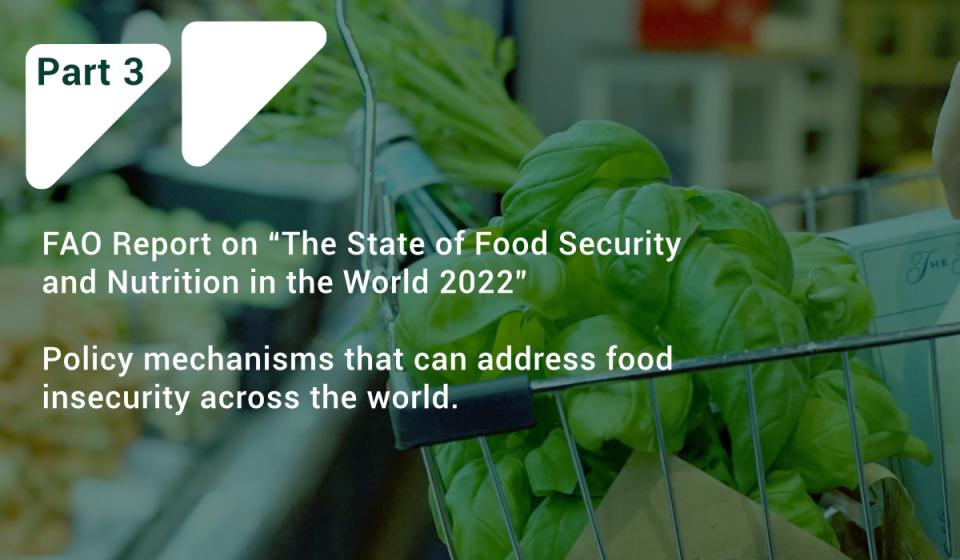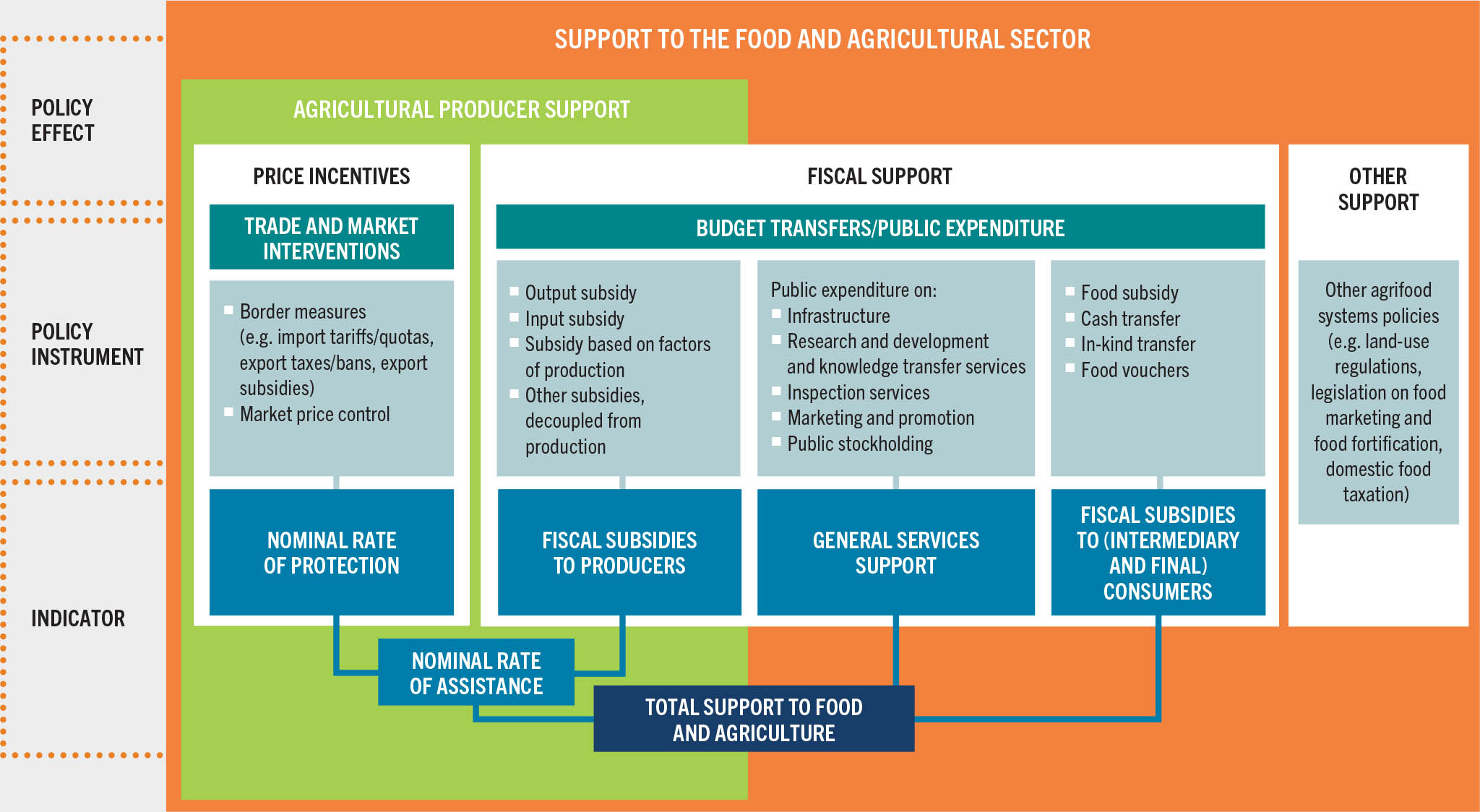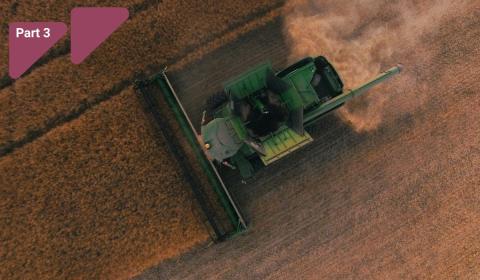
Image source: Photo by Tara Clark on Unsplash
In the second blog in this series, we outlined the state of food insecurity across the world. A key takeaway was that in 2021, 2.3 billion people globally were moderately or severely food insecure. As highlighted in the last blog: “The increase in food prices and stagnant wages made food unaffordable for large proportions of the global population – in 2022 this has been made even worse because of the war in Ukraine and the inflation and cost of living crisis.”
In this post, we explore policy mechanisms that can address food insecurity across the world – very nicely highlighted in Figure 17 from the FAO report:
FIGURE 17 FOOD AND AGRICULTURAL POLICY SUPPORT INSTRUMENTS AND INDICATORS

NOTE: “Other support” includes other agrifood systems policies that are discussed more in detail in Section 4.2.
SOURCE: Adapted from FAO, UNDP & UNEP. 2021. A multi-billion-dollar opportunity – Repurposing agricultural support to transform food systems. Rome, FAO.
Image source: FAO.
This diagram highlights the policy mechanisms that can support key food system actors:
Agricultural producers > Price Incentives, Fiscal Support
Food environment > General Services Support, Other support
Consumers > Fiscal Support
As we did with the first blog, below we give definitions (taken from Annex 7 of the FAO report) of the key terms linked to the policy mechanisms:
Price Incentives
Tariff - a tax imposed on a good imported into a country. A tariff may be specific, when it is levied as a fixed sum per unit of the imported good, or ad valorem, when it is applied at a percentage rate with reference to the value of the import.
Nominal rate of protection (NRP) - measures the extent to which trade and market policies raise or lower the producer price of a commodity above or below the international reference price. As such, it measures how such policies incentivize (i.e. protect) or disincentivize (i.e. penalize) producers. It is therefore the measure used to estimate price incentives provided to agricultural producers.
Fiscal Incentives
Fiscal subsidies - budget transfers made by governments…to individual actors of the food and agriculture sector, such as:
- fiscal subsidies to producers: aim to reduce production costs or increase farm income and can be granted depending on output, input use or use of other factors of production. (this includes input subsidies).
- fiscal subsidies to consumers: transfers under social protection programmes (given to final consumers) and food subsidies to lower the cost of food (provided to intermediaries, e.g. processors, traders, transporters, etc.).
Nominal rate of assistance (NRA) - measures transfers made to farmers individually arising from price incentives generated by trade and market policies and fiscal subsidies. In other words, the NRA accounts for the price gap at the farm gate (i.e. the difference between the producer price and the undistorted reference price) and the fiscal subsidies provided to producers, which are usually commodity specific.
General services support (GSS) - public expenditure (or budget transfers) for the provision of public or collective goods and services that aim to create enabling and environmentally sustainable conditions for the food and agricultural sector. These services connect all economic actors of food supply chains and support the nexus between producers and consumers. The most common services part of GSS include R&D and knowledge transfer, inspection services, agricultural related infrastructure, public stockholding, and food and agricultural marketing, and promotion.
- Public food stockholding - refers to the procurement, storage and release of food stocks by governments through state-owned enterprises or other public agencies. Expenditure on public food stockholding covers the costs of maintaining and managing these food stocks created through market purchase interventions, as well as strategic reserves built for food security purposes.
In the next blog, we will explore how these policies have actually been put into practice and where the strengths and weaknesses lie.
Until next time!


